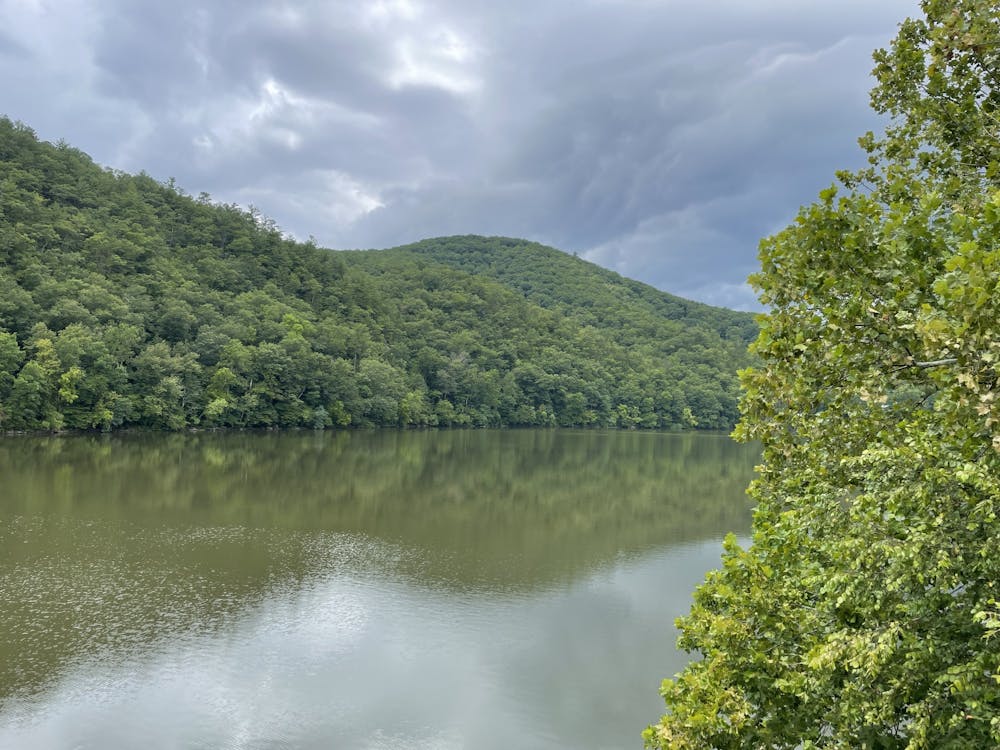Ecosystem ecologists at the University have established an increase of heat waves in rivers and streams across the United States, especially with warmer winter conditions. These heat waves have the potential to impact the water quality of the Rivanna River, creating a ripple effect that affects Charlottesville residents.
These usually rare heat waves, which are primarily a result of global warming, have drastically become more common in major cities — including Norfolk and Richmond — across the United States, negatively affecting water quality by depleting oxygen and leading to mass mortality of freshwater organisms.
The research team, which included graduate student Spencer Tassone, Environmental Sciences Prof. Michael Pace and colleagues — both at the University and at research centers around the country — analyzed 26 years of publicly available temperature datasets. Tassone will give a seminar based on their findings Thursday in room 108 of Clark Hall at 3:30 p.m.
“We looked at long term temperature data from streams and rivers around the United States,” Pace said. “These data are maintained by the U.S. Geological Survey, which monitors rivers and streams in the U.S. nationally.”
A temperature increase in a river is defined to be a heat wave when a normal-range temperature threshold is exceeded for five or more days. Under this criterion, the team found that the proportion of time for which a given U.S. river is experiencing a heat wave has increased significantly over the past 26 years. The average number of heat wave days has more than doubled from an average of 11 heat wave days in a year in 1996 to an average of about 25 heat wave days in 2021.
These heat waves differ from a gradual increase in water temperatures, which are also occurring around the globe under climate change conditions. Instead of allowing organisms to gradually relocate to different locations, heat waves happen almost instantly, not allowing organisms much time to relocate and adapt, which can force them to experience temperatures they cannot tolerate.
“Organisms live within a thermal range, where they can live their day-to-day lives up to a certain temperature,” Tassone said.
Once the temperature of a freshwater organism’s surroundings exceeds the temperature range of its internal organs, they become stressed and will often die.
“Extreme river temperatures can lead to mass mortality or contribute to mass mortality events of [freshwater organisms] like salmon,” Tassone said.
As freshwater organisms disappear from local streams and rivers, Charlottesville residents may be impacted by the increasing of riverine heat waves in the future.
“In the long run ... we're going to see more heat waves in our rivers and streams locally,” Pace said. “As climate change proceeds, we can expect these events to become more frequent.”
Riverine heat waves also can cause harmful algal blooms — rapid growths of algae and other similar organisms that divert the flow of the river and lead to dead zones, or areas with such low oxygen levels that freshwater organisms cannot survive.
“There are some species of algae that perform better at higher temperatures, and many of those are known to produce or be capable of producing harmful blooms,” Tassone said.
In the future, algal blooms may pose a risk to recreational activities — like fishing or swimming — along the river for Charlottesville locals, due to the damaged water quality brought by the dead freshwater organisms and nutrient pollution of dead zones.
However, according to Tassone, the connection between heat waves and harmful algal blooms is an active area of research in which more must be discovered to formally make the assertion that heat waves correlate significantly to harmful algal blooms.
First-year College student Sean McDevitt is part of the Sustainability Student Council and expressed concerns as riverine heat waves have the potential to become more frequent and affect the activities of students.
“I think there will definitely be a shock factor to the extent that heat waves can affect the [shores] in Charlottesville, and because of that, [I hope] there'll be a lot of positive support,” McDevitt said.
There are some steps that Charlottesville residents and governmental agencies can take to prevent an increase in riverine heat waves within Charlottesville's Rivanna river.
“Maintaining riparian vegetation along the sides of streams and rivers, which provides shading … tends to reduce these extremes,” Pace said.
The researchers also suggested improved stormwater management and expanded water temperature monitoring as additional preventative measures.
Without the aid of government agencies and the community, riverine heat waves will only continue to become more frequent.
“Because we all live in Charlottesville, we want to create a safe community and in order to do so, we have to preserve the environment,” McDevitt said.






